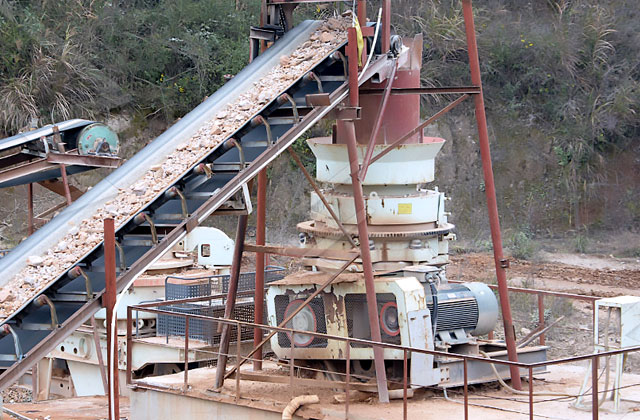Designing a dolomite ore crushing plant involves several crucial steps to ensure efficient processing and high-quality output. The first step is understanding the characteristics of the dolomite ore, including its hardness, chemical composition, and mineral structure. Dolomite is typically harder and more abrasive than limestone, so it requires crushers that can handle tougher materials, such as jaw crushers, impact crushers, or cone crushers. The plant design must also account for the desired product size and quality, which may vary based on the intended use of the dolomite, whether for industrial or construction purposes.

The second aspect of the design is selecting the appropriate crushing equipment. For initial size reduction, a primary jaw crusher is often employed to break down the larger dolomite rocks into smaller pieces. This is followed by secondary crushers like cone crushers or impact crushers to further reduce the size and produce the desired aggregate gradation. The choice of secondary crushers depends on the required particle size and the specific application of the dolomite. A cone crusher is typically used for producing finer particles, while an impact crusher might be chosen for higher output with more uniform product size.
In addition to crushers, a dolomite ore crushing plant requires screening equipment to separate the crushed material into different sizes. Vibrating screens are typically used for this purpose. The design should include several stages of screening to ensure proper sorting of materials. For instance, after the primary and secondary crushing stages, the material may pass through different screens to separate fine particles from coarser aggregates. The final product is often used as construction aggregate or as a raw material in the production of dolomitic lime, requiring precise control of particle size.
The layout of the crushing plant is another critical factor in the design. The plant should be designed to optimize the flow of materials, reduce handling costs, and minimize transportation distances between the crushing stages. This includes planning for conveyors, hoppers, and stockpiles, as well as ensuring proper material handling to avoid blockages or delays. Efficient plant layout can also contribute to a more compact design, reducing the footprint of the plant and making it easier to maintain. Dust collection and noise reduction measures should also be integrated into the layout to meet environmental and safety standards.
Lastly, the design must account for the plant’s scalability, efficiency, and maintenance requirements. Since dolomite crushing plants typically handle large volumes of material, it’s essential to use energy-efficient equipment and designs that minimize operational costs. Maintenance access should be easy, with spare parts readily available for critical components. The plant should also be equipped with monitoring systems to track performance and prevent breakdowns. Regular inspection and monitoring of crushers, screens, and conveyors help ensure smooth operations and extend the lifespan of the equipment, reducing downtime and maintenance costs.
